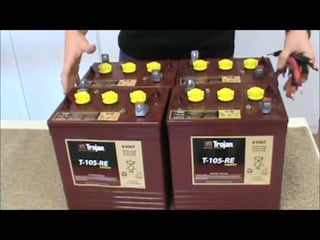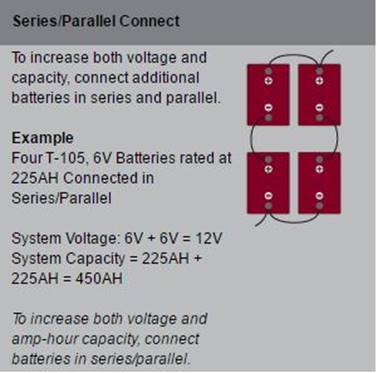Working on new and used boats 12V electrical systems is a common, if not daily occurrence around the marina. One thing we say often is "every boat is different", and it's true. All boat manufactures do it differently, and hardware and vendors change frequently for boat builders.
One of our great customers, Michael Hall, has done a deep dive into battery systems and wiring them so you can enjoy the most hassle free boating possible:
"One of the biggest draws to boating for me and especially on the Big Rideau Lake is the ample places to go “Off Hook” and anchor up in a bay for a long weekend, maybe with some friends for 3 to 4 days. But with this also comes the challenge of making sure your house batteries stay topped up. For most this often means periodic use of the trusted on board generator. However not only are these work horses noisy, they are not free to run by any means. So what measures can we take to make sure we have adequate power and also what can we do to conserve that power.
First steps to look at are the relatively simple and cheap options such as cabin lighting. Many of us still use filament 12V high energy draw bulbs in their lights, turn on the lights and watch your voltmeter drop!. But there is a cheap energy saving option available. Amazon sells by the dozen for only a few dollars, LED replacements that draw a tenth of the current and even fit snugly in your Fridge lamp! Such a simple small step goes a long way to conserving power when off hook.
Delving much deeper into the boats power system. Your boat will have a bank of “house batteries” this is your power source for all DC appliances and also act as back up when switched for emergency cranking, so it is paramount to make sure these are in good standing. Most boats however come as new with a dual set of 12V batteries, not a lot when you think about it for the amount of 12V devices on you boat! It does not take long over a weekend to drain these flat, especially if we are running two fridges and a constant need to call upon your beer assistant to keep you topped up. So the next thing to look at is increasing the amount of power storage you have on board. My personal recommendation is at a minimum 4 heavy duty 6V "Golf Cart batteries". 6V Golf Cart batteries have huge storage capacity. The importance here however is how your batteries are wired.
Understanding battery wiring.
When fitting battery banks, the biggest mistake found is not being aware electricity will always find the least cause of resistance, if wired incorrectly this can lead to your battery bank only working to half its capacity or worse just to the capacity of the lead battery. The issue is always in regards to where the negative terminal is taken from going back to earth panel, or too many negative leads.
If wiring 4 x 6V batteries the standard is to wire 2 batteries in series (imagine a daisy chain, positive to negative) this then makes 2 x 6V=12V. But then you have now two 12V batteries in essence separate from each other. So now you need to join them in way not to create 1 x 24V (not good for the boat!). By wiring the two 12V supplies in what is called Parallel, by doing so you are now joining the amperage force of all 4 batteries to one source, making a huge storage capacity for your boat.
two 12V batteries in essence separate from each other. So now you need to join them in way not to create 1 x 24V (not good for the boat!). By wiring the two 12V supplies in what is called Parallel, by doing so you are now joining the amperage force of all 4 batteries to one source, making a huge storage capacity for your boat.
Connecting batteries in series does not increase the capacity of the batteries; it simply increases the overall voltage to meet your system requirements. Once your voltage requirements are met, and if space allows you can double the batteries in a parallel connection, thereby doubling your battery capacity. See diagram above. The image is from Trojan Battery's website and it shows exactly how 4 x 6v batteries MUST be wired.
Now the mistake comes with where the negative to earth panel is taken from on the battery bank. I have seen negatives run from all negative terminal back to the earth block. All seems logical? They are all negative right? Well that as maybe but remember electricity “takes the least path of resistance”, so if you have any negative lead going back to the earth block “before the very last negative terminal in your battery bank”, the batteries after that return lead will never get to full charge capacity as the charger will only see the batteries to the first return line! Make sense? OK, let me cut out the jargon and just tell you what you must do.
Referring to the diagram above again take note of the bottom left terminal, that’s your negative line back to your earth panel. NO other negative lead should come off of the battery bank and go back to the earth panel other than this lead, if your boat has multiple leads going back to any earth then your batteries are not charging to full capacity, this is a common boat wiring mistake. Of course there should only be one positive lead also coming from the panel and that goes to the leading positive terminal on the battery, as shown.
So if planning on going off hook this season have a thought not just about your beer fridge capacity but also the storage capacity of power required to keep the beer assistant alive!
Talk to Lens Cove about upgrading your power source at best and at least making sure the source you have is wired correctly.
In my next entry I will open up the can of worms that is solar and show you how you can really go off hook for long periods and keep those batteries at optimum.
Michael Hall (Hall Of Dreams)"



